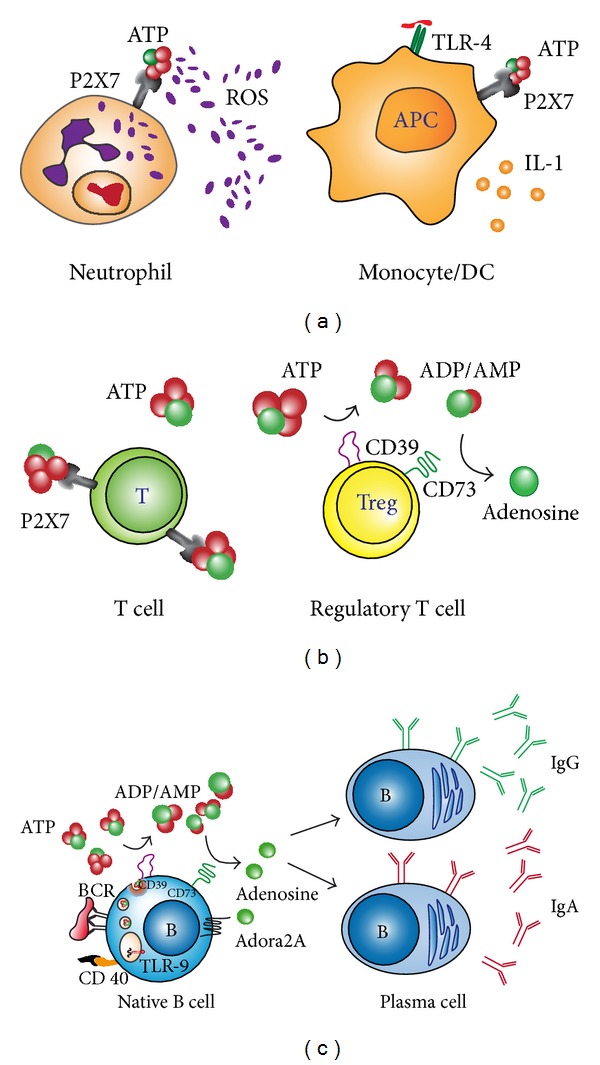Figure 1.

Immune cells regulation by extracellular purines. Nucleotides such as ATP and ADP are released from apoptotic cells or activated inflammatory cells through pannexin and connexin hemichannels or vesicular exocytosis. In the extracellular milieu ATP has a direct effect on both innate and adaptive immune cells through the activation of P2X and P2Y receptors, or after enzymatic conversion to adenosine, through its binding to adenosine receptor (ADORA). Examples of those functions are represented by granulocyte activation and IL8 secretion following P2Y receptors activation by ATP and IL1 secretion by monocyte and dendritic cells following concomitant P2X7 activation by ATP and TLR4 binding of bacterial LPS (a). Extracellular ATP promotes T lymphocytes activation by binding P2X7 receptors, a pathway modulated by regulatory T cell through ATP degradation to adenosine by the ectoenzymes expressed by those cells (b). In B lymphocyte adenosine production by the ectoenzymes expressed by subsets of B cells promotes class switch recombination and differentiation into IgG and IgA immunoglobulin secreting cells (c). (Modified from Schena et al. [59].)
